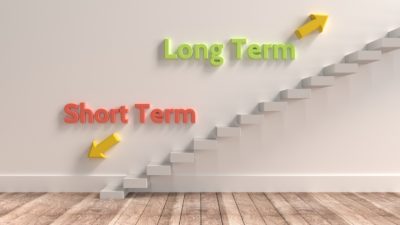Education publisher Pearson (LSE: PSON) reported the largest pre-tax loss in its history on Friday. A change of strategy in the last few years, including the disposal of The Financial Times and French media group Les Echos, combined with a slowdown in key market North America has led to a slew of profit warnings and the £2.56bn 2016 pre-tax loss.
The shares have fallen 20% in the last month, but is the company now a buy?
The loss is attributable largely to a massive £2.55bn impairment of goodwill reflecting poor trading in the North American business. Adjusted operating profit fell 27% at constant exchange rates, but the weaker pound resulted in a more flattering 12% drop after an 8% fall in underlying sales.
The company is also planning on selling its 48% stake in publisher Penguin Random House and plans to use the proceeds to pay down debt and invest in digital, which now accounts for 68% of revenues.
The company has completed its restructuring programme, spending £338m to reduce its cost base by £425m. 2017 operating profit is predicted to come in at £570m-£630m. If we trust these forecasts, the company trades below 10 times operating profit. 2016’s dividend payments total 52p per share, but the company has clearly stated its intention to rebase (read: cut) the dividend next year.
Even if the payout is halved, the shares still yield 3.83%. That said, I believe there is simply too much uncertainty in Pearson’s key markets to invest. Here are two other high-yielding businesses I’d consider instead of Pearson.
Merger to create global dividend titan
British American Tobacco (LSE: BATS) had a far more successful 2016 than Pearson, with revenues rising 12.6%, or 7% if favourable currency rates are ignored. Operating profit came in at £4,655m, for an impressive margin of 31.6%.
This performance was largely driven by an average 50bps market share gain in the company’s major markets. The Global Drive Brand portfolio, which consists of Dunhill, Kent, Lucky Strike and Pall Mall, outperformed the rest of the company with volume up 7.5% and a market share gain of 100bps.
Perhaps the most significant recent news is that the firm has agreed terms to acquire the remaining 57.8% of Reynolds American for $50bn. This will create the largest listed tobacco company in the world as well as marking a full-scale return to the American market for BATS, as well as providing increased efficiencies and economies of scale.
The combination of these two defensive cash-cows could facilitate chunky dividends for years to come. Even if the deal doesn’t go ahead, BATS would be set to yield 3.4%.
Another defensive yield?
BAE Systems (LSE: BA.) also had a successful 2016, with sales jumping 6.2%, although this was largely due to favourable exchange rates. Operating profit fared better, increasing to £1,742m, or a 10% gain on a constant currency basis.
Order intake increased by £7.5bn to £22.4bn, while the order backlog increased by £5.2bn to £42bn after contract wins in the UK and the US. The company paid a 21.3p per share dividend last year, representing a 3.5% yield.
The short-term outlook for BAE seems strong. US defence spending will likely increase under Trump, which should bode well for the company, although it would be remiss of me to avoid mentioning the massive £6.1bn pension deficit, which could cause problems in the long term.







